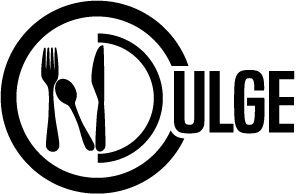Is Your Menu Eating You Alive?
- Admin
- Jan 3, 2019
- 3 min read
Updated: Jan 15, 2019
Menu items are essential to any restaurant’s success but can also be your worst enemy. Most restaurants I encounter as a consultant who are failing have the same common denominator…a large menu, presumably designed to capture all demographics. Whether it be a sales issue, labor issue, a food cost issue, or a training issue, the menu is usually the biggest culprit. One question I always ask is “what dishes is your restaurant known for?” and most of the time that singular question is the hardest to answer.
Sales:
You may think offering an abundance of choices may appeal to the masses, but in all actuality your menu is cannibalizing itself. The more choices you give your guests the longer it takes to make a decision, combine that with a server wanting so desperately to take your order, the ambiance of your establishment and being surrounded by (hopefully) a lot of people in your dining room. This combination leads to what psychologist call “the paradox of choice.” The anxiety of having too many choices usually leads to guest frustration further leading to ordering the “safe” choice. The bad news is that choice probably isn’t your money maker, nor anything that sets you apart from the rest.
Labor:
Offering too many choices in almost all cases leads to a labor issue. Someone must prep all the food for all your offerings prior to cooking a serving each dish. Your kitchen layout may be designed on a larger scale to accommodate your large menu resulting in more line cooks than you actually need.
Food Cost:
The two major contributors of high food cost are the lack of inventory control and waste. Yes, systems are in place for tracking where your food goes. A product mix report is a great resource, but when your inventory is off, it doesn’t tell you where your food disappeared to. We all know food doesn’t grow legs and walk out your door. If it did, the Health Department would be knocking on the same door. But when a chef counts his inventory, it becomes almost impossible to be accurate when you are stocking over 250 items on the shelf. Waste is the other issue. A restaurant owner’s worst nightmare is running out of something. Chefs are acutely aware of this as they try to balance labor costs, food costs and business volumes. The more you offer, the more individual items you have a potential to waste. Not only are you wasting food, but you paid someone to prep it.
Training:
The most common issue I hear from guests about a restaurant is the service; service is slow, service is not friendly, it seems our server doesn’t know what he/she is doing. Yes, leave it to Yelp! to broadcast this to the world about your restaurant. On a business owners’ standpoint, you have to ask yourself, what is the origin of the complaints? Is it that the individual is just having a bad day? Did you not hire correctly? Or did the server not get trained well enough? Typically, it’s the latter. The more you offer, the more training your front of the house and back of the house staff must have. With the lack of training time comes mistakes in the kitchen or more critically, mistakes in your dining room.
The other issue I commonly see are servers and bartenders are order takers rather than hospitable sales people. They do not volunteer good information to guiding your guests because they do not have the knowledge to be experts of your menu, resulting in lost opportunities to make a sale.
Now that we have come full circle, here are some words of advice. Restaurant profitability is at the mercy the weather, acts of God, sporting events and consumer confidence. With rising commodity prices, rent hikes, minimum wage increases and changes in labor laws, profit margins are razor thin. A large menu only complicates matters within your restaurant’s walls.
As Albert Einstein once said, “The definition of genius is taking the complex and making it simple.”








Comments